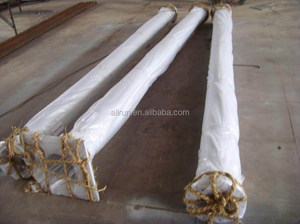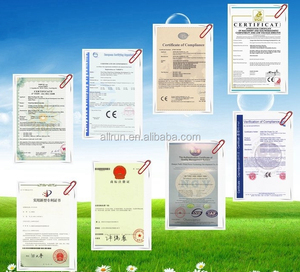
All categories
Featured selections
Trade Assurance
Buyer Central
Help Center
Get the app
Become a supplier

(2106 products available)











































Electric wind instruments (EWIs) refer to several musical instruments that use electric sensors and circuitry to produce sound. These instruments typically resemble traditional wind instruments, such as flutes or saxophones, but have electronic components that allow them to produce a wider range of sounds and effects. Here are some common types of electric wind instruments:
EWI 4000S
This is an electric wind instrument that produces a wide range of sounds, including brass, woodwinds, and synthesizer sounds. It has a unique sensor technology that provides accurate and expressive control over the sound. The EWI 4000S also features a rechargeable battery, making it portable and convenient to use in different settings.
EWI USB
The EWI USB is an electric wind instrument that connects directly to a computer via a USB cable. It has over 1000 sounds and can be used with various software synthesizers. The instrument also has a flexible and adjustable fingering system, making it easy to customize for different playing styles.
Akai Professional EWI Solo
This is a self-contained electric wind instrument with a built-in speaker and battery. It has over 200 sounds and can be used without a computer or external device. The EWI Solo also features a user-friendly interface, making it easy to navigate and customize the settings.
Yamaha WX5
The Yamaha WX5 is an electric wind instrument that resembles a traditional saxophone. It has a breath sensor that detects the player's airflow and adjusts the sound accordingly. The instrument also features a MIDI output, allowing it to connect with other electronic devices and instruments.
Roland Aerophone AE-10
This is an electric wind instrument that combines analog and digital technology. It has over 50 sounds and can be used with a wide range of software synthesizers. The Aerophone AE-10 also features a traditional reed mouthpiece, making it feel more like a acoustic wind instrument.
Flexibility and Customization
One of the key benefits of electric wind instruments is their flexibility and customization options. Most instruments allow players to customize the sounds, sensitivity, and other parameters to suit their playing style and preferences. This level of customization is not typically found in traditional wind instruments.
Performance and Recording
Electric wind instruments are popular among performers and recording artists because of their versatility. They can produce a wide range of sounds, from realistic brass and woodwind tones to unique electronic sounds that no other instrument can make. Some electric wind instruments also have features that make them ideal for live performance, such as built-in effects processors and amplifiers.
Electric wind instruments (EWIs) are versatile musical tools that find applications in various performance and music production settings. Here are some key application areas:
When choosing an electric wind instrument, consider the following factors:
Electric wind instruments are crafted with various features and designs that enhance their playability, sound quality, and overall performance. Here are some key features and designs alongside their functions:
Material
Electric wind instruments can be made from various materials, including metal, plastic, or composite materials. Each material can affect the sound quality and durability of the instrument. For example, metal instruments often have a richer, warmer tone, while plastic or composite instruments may be more durable and affordable.
Key and Mechanism
Some electric wind instruments have keys and mechanisms similar to brass instruments. These keys and mechanisms help the player to change the pitch of the notes by providing an alternative way to change the instrument's tube length. They are designed for easy and quick operation, ensuring smooth transition and improved playability.
Sensor Technology
Many electric wind instruments use sensor technology to detect finger position and control parameters like breath pressure. This feature eliminates the need for traditional keys and offers a more fluid and responsive playing experience. Sensor technology can also allow for more expressive playing and dynamic control over the instrument's sound.
Body Design
The body of electric wind instruments is often designed to be ergonomic and comfortable to hold. The shape and contouring of the body can reduce strain during extended playing sessions. Also, the weight distribution ensures a balanced and comfortable playing experience.
Electric and Electronic Components
Electric wind instruments come with electric and electronic components that are responsible for amplifying and processing the instrument's sound. These components may include pickups, amplifiers, and MIDI interfaces. The electric components ensure that the instrument's sound can be amplified for live performances and recorded with precision.
Sound Generation
The sound generation mechanism varies between different electric wind instruments. Some use digital modeling to create a wide range of tones, while others use traditional mouthpieces and reeds. The sound generation feature determines the instrument's tonal quality and versatility.
Connectivity Options
Many electric wind instruments feature connectivity options like MIDI and audio outputs. These options allow the instrument to connect to computers, audio interfaces, and other electronic devices for recording and live performance. Connectivity options make the instrument versatile and adaptable to different playing scenarios.
Q1: What are the advantages of electric over traditional wind instruments?
A1: Electric wind instruments have a more consistent sound, which is easier to control than the traditional ones. They also offer a wide range of sounds and effects, which can be customized. The electric wind instrument is more portable and can be played silently through headphones.
Q2: What is the maintenance of electric wind instruments?
A2: The electric wind instrument should be cleaned after use with a soft cloth. It should be stored in a case when not in use. Inspect the keys and pads regularly and check the wiring.
Q3: Can electric wind instruments be used for live performances?
A3: Yes, electric wind instruments can be used for live performance. They can be connected to amplifiers and PA systems.
Q4: What should one consider when buying an electric wind instrument?
A4: Consider factors like the number of sensors, build quality, sound library, connectivity options, and ergonomics. Also consider the level of the player, whether a beginner, intermediate, or advanced.
Q5: Can electric wind instruments be used for recording music?
A5: Yes, electric wind instruments can be used for recording music. They can be connected to audio interfaces and recording equipment.